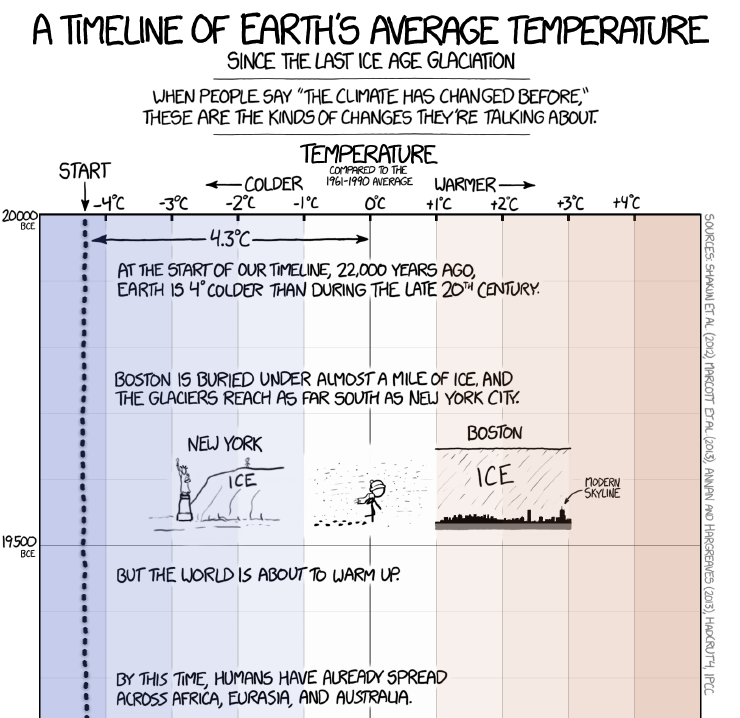Since the last ice age glaciation, which ended around 11,700 years ago, Earth's average temperature has undergone significant fluctuations.
During the early Holocene, temperatures rose rapidly, leading to the establishment of a warmer climate than today's. This period, known as the Holocene Climate Optimum, peaked around 6,000 to 9,000 years ago, with global temperatures possibly 1-2 degrees Celsius warmer than pre-industrial levels.
Following the Holocene Climate Optimum, temperatures gradually declined due to natural factors such as changes in Earth's orbit and solar output. This cooling trend culminated in the Little Ice Age, a period of colder-than-average temperatures that lasted from roughly the 14th to the mid-19th century. During this time, glaciers advanced in many parts of the world, and colder conditions prevailed.
Since the end of the Little Ice Age, Earth's average temperature has been increasing, a trend that has accelerated since the late 19th century due to human activities, particularly the burning of fossil fuels and deforestation. This period of rapid warming, often referred to as anthropogenic or human-induced global warming, has led to a significant increase in global average temperatures compared to pre-industrial levels. The past few decades have seen some of the warmest years on record, with impacts on ecosystems, weather patterns, and sea levels, highlighting the importance of addressing climate change through mitigation and adaptation measures.

This post may contain affiliate links. As an Amazon Associate, I earn from qualifying purchases.